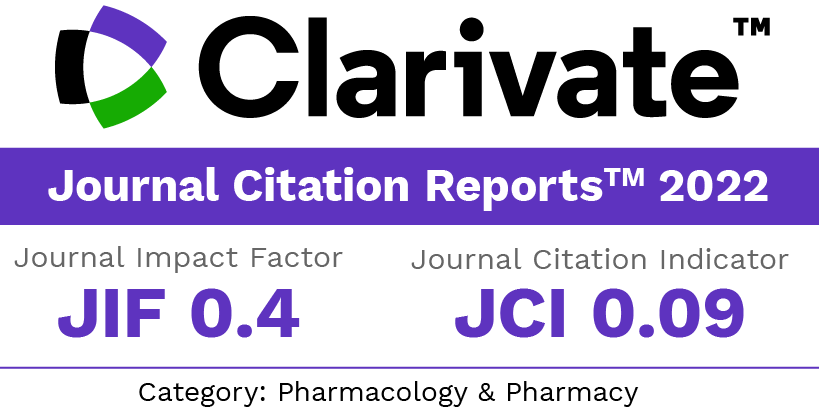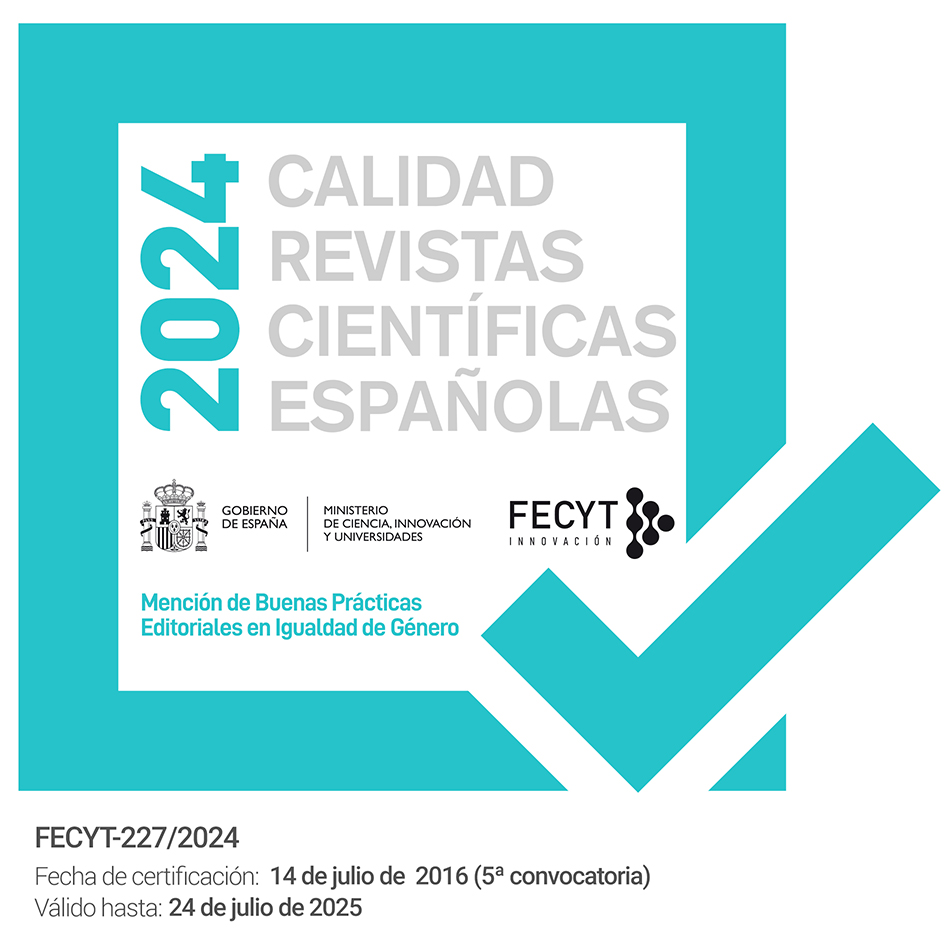Development and Evaluation of Moisturizing Cream containing Salvia hispanica and Aloe vera and its Antioxidant Potential
DOI:
https://doi.org/10.30827/ars.v66i3.32785Keywords:
Aloe vera, Salvia hispanica, Chía, Crema hidratante, antioxidanteAbstract
Introduction: Bioactive chemicals in Salvia hispanica (Chia) seeds and Aloe vera hydrate, protect, and restore skin. The goal of this work will formulate and evaluate a multifunctional herbal cream with Salvia hispanica seed mucilage, Aloe vera gel, shea butter, and coconut oil to hydrate and restore skin.
Methods: Salvia hispanica seed extract was obtained through mucilage extraction. Aloe vera gel was prepared and incorporated into the formulation along with shea butter and coconut oil. The final cream formulation was evaluated for physicochemical parameters such as pH (6), spreadability (7.5 g/sec), consistency, washability, and non-irritancy. The hydrogen peroxide scavenging assay for antioxidant activity performed.
Results: The formulated cream demonstrated antioxidant activity revealed a significant hydrogen peroxide scavenging activity of 95.16 %, indicating high radical scavenging potential. The formulation exhibited desirable physicochemical characteristics.
Conclusion: This study found that the cream is antioxidant activity with its natural composition and helpful plant-based components; it could be an effective and sustainable skincare solution.
Downloads
References
Enes BN, Moreira LD, Toledo RC, Moraes ÉA, de Castro Moreira ME, Hermsdorff HH, Noratto G, Mertens-Talcott SU, Talcott S, Martino HS. Effect of different fractions of chia (Salvia hispanica L.) on glucose metabolism, in vivo and in vitro. J Funct Food. 2020;71:104026. Doi: 10.1016/j.jff.2020.104026 DOI: https://doi.org/10.1016/j.jff.2020.104026
Din ZU, Alam M, Ullah H, Shi D, Xu B, Li H, Xiao C. Nutritional, phytochemical and therapeutic potential of chia seed (Salvia hispanica L.). A mini-review. Food Hydrocoll Health. 2021;1:100010. Doi: 10.1016/j.fhfh.2021.100010
Güzel S, Ülger M, Özay Y. Antimicrobial and antiproliferative activities of chia (Salvia hispanica L.) seeds. Int J Sec. Meta. 2020;7(3):174-80. Doi: 10.21448/ijsm.722574 DOI: https://doi.org/10.21448/ijsm.722574
Lucas-González R, Roldán-Verdu A, Sayas-Barberá E, Fernández-López J, Pérez-Álvarez JA, Viuda-Martos M. Assessment of emulsion creams formulated with chestnut (Castanea sativa M.) flour and chia (Salvia hispanica L) oil as partial fat replacers in pork burger formulation. J Sci Food Agric. 2020; 100(3):1265-73. Doi: 10.1002/jsfa.10138 DOI: https://doi.org/10.1002/jsfa.10138
Ebrahim R, Abdelrazek A, El-Shora H, El-Bediwi AB. Effect of ultraviolet on molecular structure and photochemistry compounds for Salvia hispanica medical seeds. Egypt Acad J Biolog Sci. (D-Histology and histochemistry) 2022;14(1):127-35. Doi: 10.21608/eajbsd.2022.232507 DOI: https://doi.org/10.21608/eajbsd.2022.232507
Guiotto EN, Tomás MC, Haros CM. Development of highly nutritional breads with by-products of chia (Salvia hispanica L.) seeds. Food. 2020;9(6):819. Doi:10.3390/foods9060819 DOI: https://doi.org/10.3390/foods9060819
Oteri M, Bartolomeo G, Rigano F, Aspromonte J, Trovato E, Purcaro G, Dugo P, Mondello L, Beccaria M. Comprehensive chemical characterization of chia (Salvia hispanica L.) seed oil with a focus on minor lipid components. Food. 2022;12(1):23.Doi: 10.3390/foods12010023 DOI: https://doi.org/10.3390/foods12010023
Motyka S, Koc K, Ekiert H, Blicharska E, Czarnek K, Szopa A. The current state of knowledge on Salvia hispanica and Salviae hispanicae semen (chia seeds). Mole. 2022;27(4):1207.doi:10.3390/molecules27041207 DOI: https://doi.org/10.3390/molecules27041207
Banan ZM, Yaghobfar A, Mojab F. The chemical composition of Salvia macrosiphon seed. Iran J Pharm Sci. 2023;19(2):166-75. Doi: 10.22037/ijps.v19i2.43809
Dziadek K, Kopeć A, Dziadek M, Sadowska U, Cholewa-Kowalska K. The changes in Phytochemical compounds and antioxidant activity of chia (Salvia hispanica L.) herb under storage and different drying conditions: A comparison with other species of sage. Mole. 2022;27(5):1569. Doi: 10.3390/molecules27051569 DOI: https://doi.org/10.3390/molecules27051569
Madaan R, Bala R, Zandu SK, Singh I. Formulation and characterization of fast dissolving tablets using Salvia hispanica (chia seed) mucilage as superdisintegrant. Acta Pharm Sci. 2020;58(1):69-82. Doi: 10.23893/1307-2080.APS.05805
Saleh HE, Chiad JS, Shawkat SM. Extraction, Characterization, and Evaluation the Activity of Chia Seed (Salvia hispanica L.) as an Antibacterial for the Treatment of Gingivitis. Iraqi J Industr Res. 2022;9(3):110-8. Doi: 10.53523/ijoirVol9I3ID216 DOI: https://doi.org/10.53523/ijoirVol9I3ID216
Ramakrishna S, Gopikrishna UV. Formulation and Evaluation of Herbal Hair Cream. SchInt J Tradit Complement Med. 2022; 5(2):28-32. Doi: 10.36348/ssijtcm.2022.v5i02.002 DOI: https://doi.org/10.36348/sijtcm.2022.v05i02.002
Kulkarni AT, Agarkar BS, Sawate AR, Kshirsagar RB. Determination of physicochemical properties of chia seeds (Salvia hispanica L.). J Pharmacogn Phytochem. 2020;9(2):1858-61. Doi: NA
Sonawane PR, Sonawane SN, Aher SN, Surana KR, Patil VR, Mahajan SK, Patil DM. In silico Evaluation of Anti-Inflammatory Potential of Pyrimidine based Molecules. Adv Biores. 2024;15(4):196-207. Doi: 10.15515/abr.0976-4585.15.4.197206
Surana KR, Jadhav PS, Shewale HS, Wagh DB, Mahajan SK, Musale JV. Insilico and Biological Evaluation of Anti-Inflammatory Activity of synthesized Benzimidazoles Derivatives. Biosci Biotechnol Res Asia. 2024;20(3):1241-53. Doi: 10.13005/bbra/330 DOI: https://doi.org/10.13005/bbra/3300
Fakir JS, Ahire CM, Surana KR, Kalam A, Ahamad AA, Davanage MD. Formulation and Evaluation of Antibacterial and Anti-Inflammatory Emulgel Containing Eugenia caryophyllus Buds Extract. Biosci Biotechnol Res Asia. 2024;21(3):1183-96.Doi: 10.13005/bbra/3296. DOI: https://doi.org/10.13005/bbra/3296
Li J, Fan G, Chen Y, Luo J, Zhang R. Optimization and characterization of antioxidant-rich cream incorporating Aloe vera gel. J Cosmet Dermatol. 2023;22(2):221-228. Doi: 10.1111/jocd.15267 DOI: https://doi.org/10.1111/jocd.15267
Din ZU, Alam M, Ullah H, Shi D, Xu B, Li H, Xiao C. Nutritional, phytochemical and therapeutic potential of chia seed (Salvia hispanica L.). A mini-review. Food Hydrocoll Hlth. 2021;1:100010 Doi: 10.1016/j.fhfh.2021.100010 DOI: https://doi.org/10.1016/j.fhfh.2021.100010
Guzel KS, Ulger M, Kahraman A. Phytochemical analysis, antioxidant and antimicrobial activities of Salvia virgata mericarps. Bot Serb. 2021;45(2):223-31. Doi: 10.2298/BOTSERB2301019G DOI: https://doi.org/10.2298/BOTSERB2102223G
Madaan R, Bala R, Zandu SK, Singh I. Formulation and characterization of fast dissolving tablets using Salvia hispanica (chia seed) mucilage as superdisintegrant. Acta Pharm. Sci. 2020;58(1):69-82. Doi: 10.23893/1307-2080.APS.05805 DOI: https://doi.org/10.23893/1307-2080.APS.05805
Downloads
Published
How to Cite
Issue
Section
License
Copyright (c) 2025 Khemchand Surana

This work is licensed under a Creative Commons Attribution-NonCommercial-ShareAlike 4.0 International License.
The articles, which are published in this journal, are subject to the following terms in relation to the rights of patrimonial or exploitation:
- The authors will keep their copyright and guarantee to the journal the right of first publication of their work, which will be distributed with a Creative Commons BY-NC-SA 4.0 license that allows third parties to reuse the work whenever its author, quote the original source and do not make commercial use of it.
b. The authors may adopt other non-exclusive licensing agreements for the distribution of the published version of the work (e.g., deposit it in an institutional telematic file or publish it in a monographic volume) provided that the original source of its publication is indicated.
c. Authors are allowed and advised to disseminate their work through the Internet (e.g. in institutional repositories or on their website) before and during the submission process, which can produce interesting exchanges and increase citations of the published work. (See The effect of open access).























